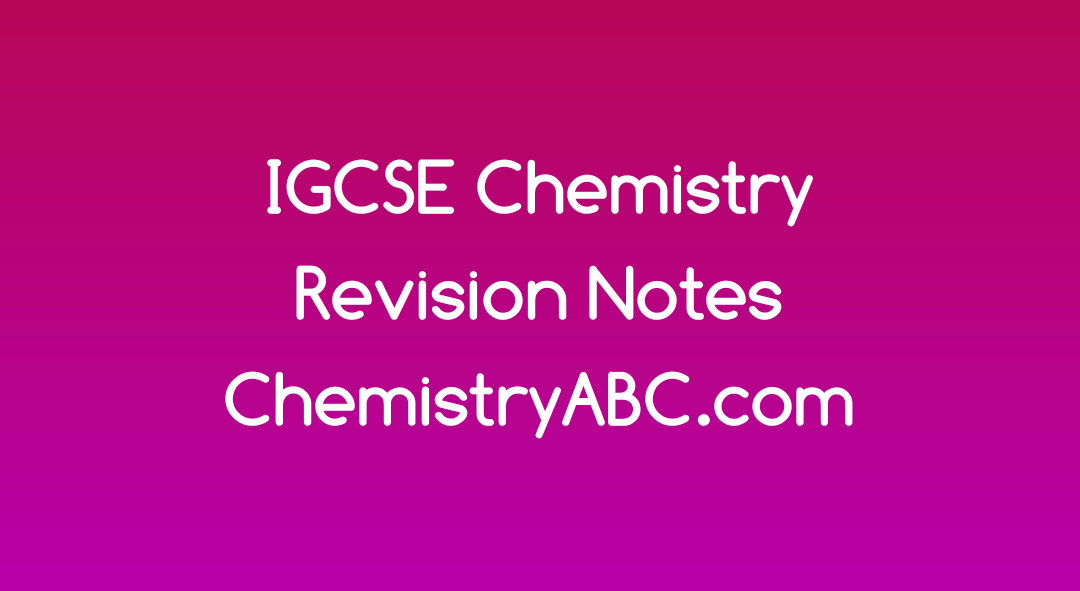Symbols & Formulae
Stoichiometry deals with the application of the laws of definite proportions and of the conservation of mass and energy to chemical activity
For eg; when oxygen and hydrogen react to produce water, one mole of oxygen reacts with two moles of hydrogen to produce two moles of water.
In addition, stoichiometry can be used to find quantities such as the amount of products that can be produced with a given amount of reactants and percent yield.
Symbols & Formulae of Elements & Compounds
Element symbols
Each element is represented by its own unique symbol as seen on the Periodic Table e.g. H is hydrogen
Where a symbol contains two letters, the first one is always in capital letters and the other is small, eg. sodium is Na, not NA
Atoms combine together in fixed ratios that will give them full outer shells of electrons
The chemical formula tells you the ratio of atoms
Eg. H2O is a compound containing 2 hydrogen atoms which combine with 1 oxygen atom
The chemical formula can be deduced from the relative number of atoms present
Eg. if a molecule contains 3 atoms of hydrogen and 1 atom of nitrogen then the formula would be NH3
Diagrams or models can also be used to represent the chemical formula
Chemical formulae
The structural formula tells you the way in which the atoms in a particular molecule are bonded. This can be done by either a diagram (displayed formula) or written (simplified structural formula)
The empirical formula tells you the simplest whole-number ratio of atoms in a compound
The molecular formula tells you the actual number of atoms of each element in one molecule of the compound or element e.g. H2 has 2 hydrogen atoms, HCl has 1 hydrogen atom and 1 chlorine atom
Example: Butane
- Structural formula (simplified)
CH3CH2CH2CH3
- Molecular formula
C4H10
- Empirical formula
C2H5
Deducing formulae by combining power
- The concept of valency is used to deduce the formulae of compounds
- Valency or combing power tells you how many bonds an atom can make with another atom
- Carbon is in Group IV so a single carbon atom can make 4 single bonds or 2 double bonds
| GROUP | VALENCY |
|---|---|
| I | 1 |
| II | 2 |
| III | 3 |
| IV | 4 |
| V | 3 |
| VI | 2 |
| VII | 1 |
| VIII | 0 |
We can use the combining power of each atom to work out a formula
Example: what is the formula of aluminium sulfide?
Write out the symbols of each element and write their combining powers underneath:
Al S
3 2
The formula is then calculated by cross multiplying each atom with the number opposite, hence the formula for aluminium sulfide is Al2S3
Deducing Formulae of Ionic Compounds
- The formulae of these compounds can be calculated if you know the charge on the ions.
- Below are some common ions and their charges:
| ION | FORMULA & CHARGE |
|---|---|
| AMMONIUM | NH₄⁺ |
| CARBONATE | CO₃²⁻ |
| COPPER(II) | Cu+2 |
| CHROMIUM(III) | Cr+3 |
| IRON(II) | Fe+2 |
| HYDROXIDE | HO– |
| HYDROGEN CARBONATE | HCO3– |
| NITRATE | NO3– |
| SULFATE | SO4-2 |
For ionic compounds you have to balance the charge of each part by multiplying each ion until the sum of the charges = 0
Example: what is the formula of aluminium sulfate?
Write out the formulae of each ion, including their charges
Al3+ SO42-
Balance the charges by multiplying them out:Al3+ x 2 = +6 and SO42- x 3 = -6; so +6 – 6 = 0
So the formula is Al2(SO4)3
assignment Atoms Elements & Compounds chemical bonding chemical kinetics class 12 notes CHEMISTRY chemistry class 11 chapter 1 notes vedantu CIE class 11 chemistry chapter 1 notes vedantu Class 12 Notes Csir CSIR NET csir net chemical science free study material csir net chemical science handwrittennotes csir net chemical science notes csir net chemical sciences notes csir net chemical science study material pdf csir net result csir net study material pdf CSIR NET Syllabus gate Handwritten Handwritten Notes IGCSE Chemistry J Chemistry CSIR NET chemistry notes J Chemistry CSIR NET coaching J Chemistry CSIR NET coaching institute J Chemistry CSIR NET notes J Chemistry CSIR NET online resources J Chemistry CSIR NET preparation J Chemistry CSIR NET question papers J Chemistry CSIR NET study guides J Chemistry CSIR NET syllabus J Chemistry free study materials msc chemistry notes net NOTES ORGANIC CHEMISTRY PDF Revision Notes spectroscopy vedantu chemistry class 12 note vedantu class 11 chemistry notes vedantu class 12 chemistry notes vedantu notes class 11 chemistry vedantu notes class 12 chemistry



